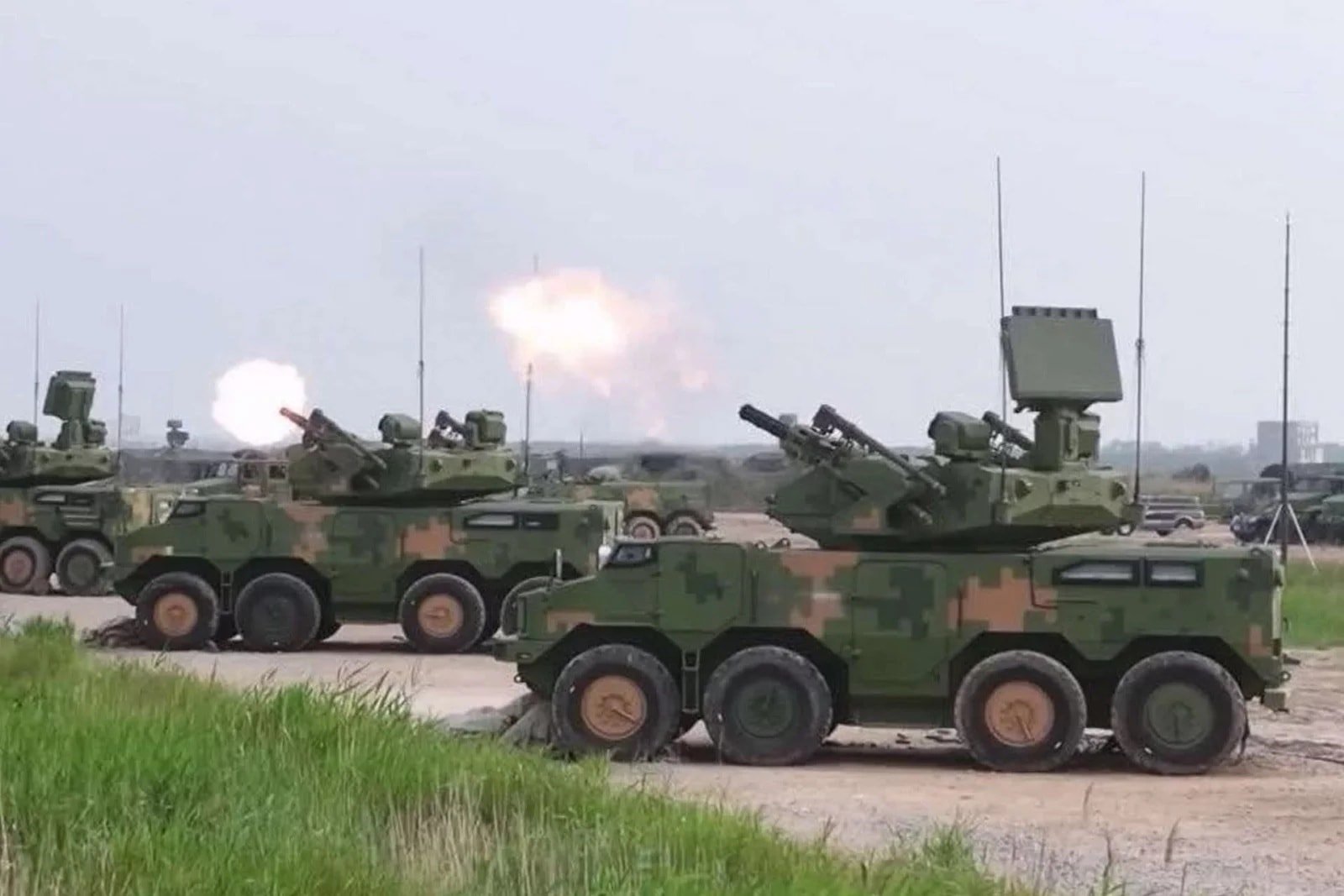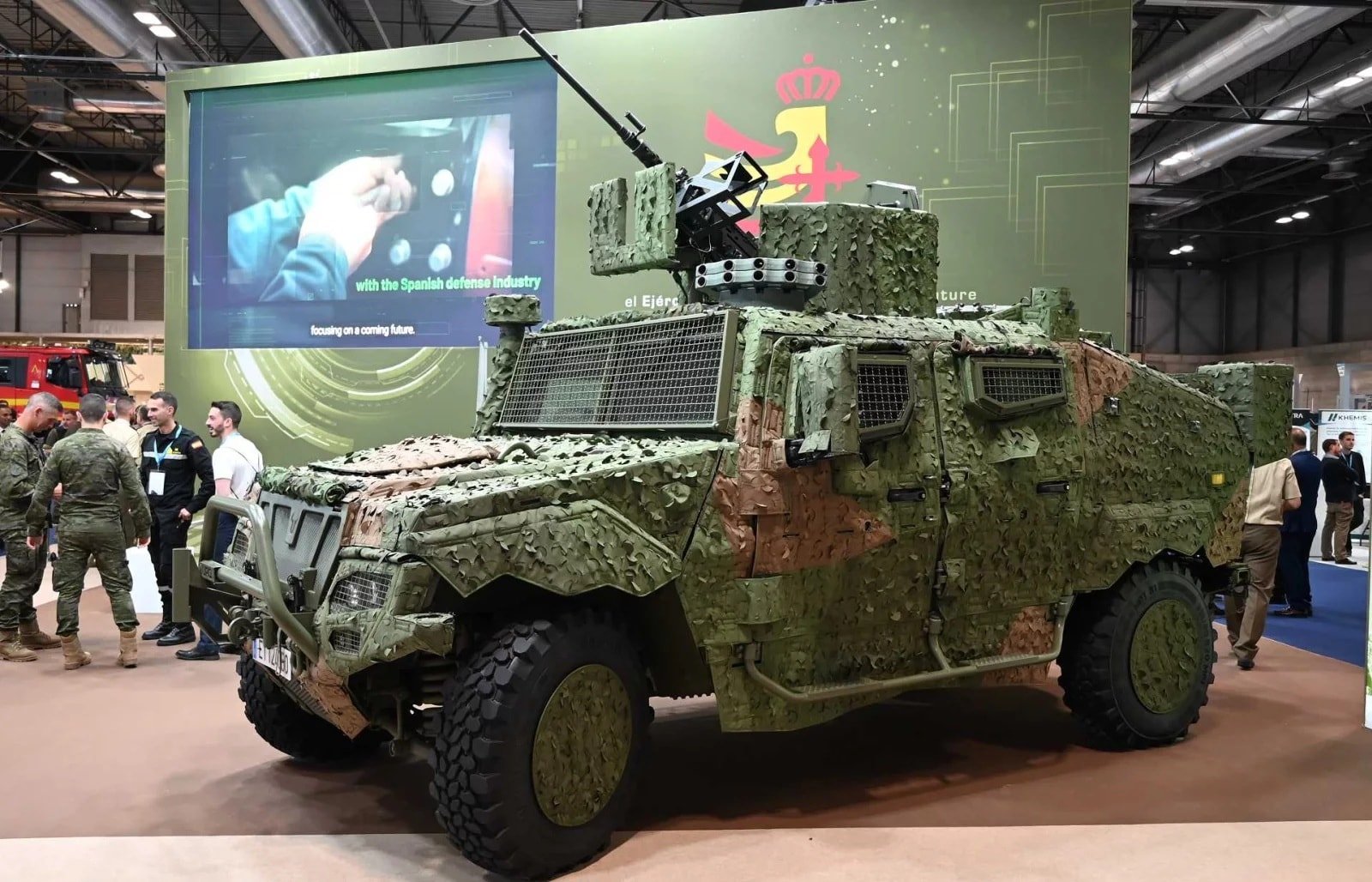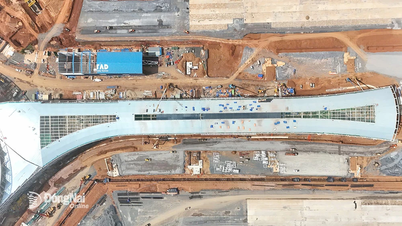* Can the Type 625E air defense system "shoot down" UAVs?
During an exercise this week, an air defense unit of the Chinese People's Liberation Army tested the use of the Type 625E short-range air defense system to respond to swarms of unmanned aerial vehicles (UAVs).
In the context of increasing challenges from UAVs, China's recent tests using the Type 625E to counter UAVs show the country's military's rapid adaptation to new challenges. The results of recent tests show that this air defense system is capable of "taking down" swarms of UAVs.
 |
| Tests using the Type 625E air defense system to counter UAVs show China's rapid adaptation to new threats. Photo: Army Recogntion |
The Type 625E is a modern mobile air defense system, combining a 25mm Gatling 6 automatic gun with missile launchers mounted on a highly mobile 8x8 wheeled chassis. Designed to deal with low-flying targets, including UAVs, helicopters and precision-guided munitions, the system can operate independently without a separate command vehicle. The system integrates fire control radar and electro-optical sensors to track and destroy aerial targets quickly and accurately. Along with the ability to fire thousands of rounds per minute, the Type 625E is also equipped with short-range air defense missiles, creating an effective defense layer in complex combat environments.
The Type 625E air defense system has undergone rapid development, reflecting the urgent need of the People's Liberation Army to counter new-generation air threats. Shortly after the prototype was introduced, the system was put into training and met live-fire standards.
Compared to similar systems such as the Russian Pantsir-S1 or the American IM-SHORAD, the Type 625E possesses many outstanding advantages thanks to its full automation, integrated firing element retrieval system and flexibility, suitable for fast and distributed combat operations. While the Pantsir and IM-SHORAD still depend on layered integration with large-scale command and control networks, the Type 625E design clearly demonstrates the tactical orientation towards a decentralized combat model.
* Romania orders 24 VAMTAC ST5 BN2 armored vehicles
Army Recognition quoted information from Profit, Romania's leading economic and business news site, saying that the Romanian Ministry of Defense , through the state defense procurement agency Romtehnica, has signed a contract with the Spanish manufacturer Vehículos Especiales SA (UROVESA) to purchase 24 VAMTAC ST5 BN2 armored tactical vehicles.
A highly mobile tactical vehicle, VAMTAC was developed by UROVESA in the early 1990s and has proven its effectiveness in practice. VAMTAC is designed to operate on difficult terrain and in harsh environmental conditions, with a 4x4 configuration, independent suspension and a sturdy chassis. Today, VAMTAC is standard equipment in the Spanish Armed Forces and has been exported to more than 25 countries in many variants such as troop transport, reconnaissance, ambulance and special operations vehicles.
 |
| VAMTAC ST5 light tactical vehicle at the FEINDEF 2025 defense exhibition in Madrid. Photo: Army Recognition |
The ST5 is the latest and most advanced generation in the VAMTAC vehicle line. The BN2 variant ordered by Romania is equipped with bullet and mine protection, reaching levels 1 to 2 according to NATO STANAG standards, depending on the configuration. The vehicle is equipped with a 188 horsepower Steyr diesel engine, allowing it to reach a maximum speed of 135 km/h and a range of over 600 km. The VAMTAC ST5 BN2 can carry up to 4 fully equipped soldiers and can integrate additional specialized equipment such as remote-controlled weapon stations, communication systems or ambulance modules.
With a total weight of approximately 5.3 tonnes and a payload capacity of up to 1.5 tonnes, the VAMTAC ST5 BN2 combines mobility, protection and versatility in a compact tactical platform.
VAMTAC has been used by many countries around the world , including Spain, Morocco, Portugal, Malaysia, Indonesia, Iraq, Saudi Arabia, Oman, Dominican Republic, Ghana, Singapore.
* US shifts to developing F-47 stealth fighter
The US Department of Defense recently proposed redirecting the budget from the 6th generation fighter development program F/A-XX for the Navy to developing the F-47 stealth fighter for the Air Force.
Accordingly, the US Department of Defense has asked Congress to reallocate $500 million from the F/A-XX acceleration budget to support the F-47. However, this proposal is facing mixed opinions. Some officials reject the plan to redirect the budget and propose increasing the allocation to $750 million to accelerate the F/A-XX program.
 |
| The Pentagon is proposing to delay the F/A-XX development program to avoid putting pressure on the US defense industry. Photo: US Air Force |
The F/A-XX is the US Navy's main next-generation fighter development program, aiming to replace the aging F/A-18E/F Super Hornet and EA-18G Growler. Launched in 2008, the program aims to develop an advanced stealth aircraft capable of operating in harsh combat environments and performing multiple missions such as attack, reconnaissance, electronic warfare and aerial refueling. Accordingly, the F/A-XX will be deployed on aircraft carriers, operating in parallel with the F-35C, to respond to increasingly complex threats.
However, the Pentagon has proposed delaying the F/A-XX program, fearing that the defense industry could be overwhelmed by developing two sixth-generation fighters at the same time. Boeing, which won the contract to develop the F-47 in March, is now focusing all its efforts on the program. Pentagon officials say delaying the F/A-XX program will allow the technology to mature and reduce bottlenecks in the production line.
TRAN HOAI (synthesis)
* Today's World Military column on the People's Army Electronic Newspaper sends readers the latest information on world military security and defense activities in the past 24 hours.
Source: https://baodaknong.vn/quan-su-the-gioi-hom-nay-7-6-my-chuyen-huong-sang-phat-trien-tiem-kich-tang-hinh-f-47-254859.html

























































































![[OCOP REVIEW] Tu Duyen Syrup - The essence of herbs from the mountains and forests of Nhu Thanh](https://vphoto.vietnam.vn/thumb/402x226/vietnam/resource/IMAGE/2025/6/5/58ca32fce4ec44039e444fbfae7e75ec)





Comment (0)